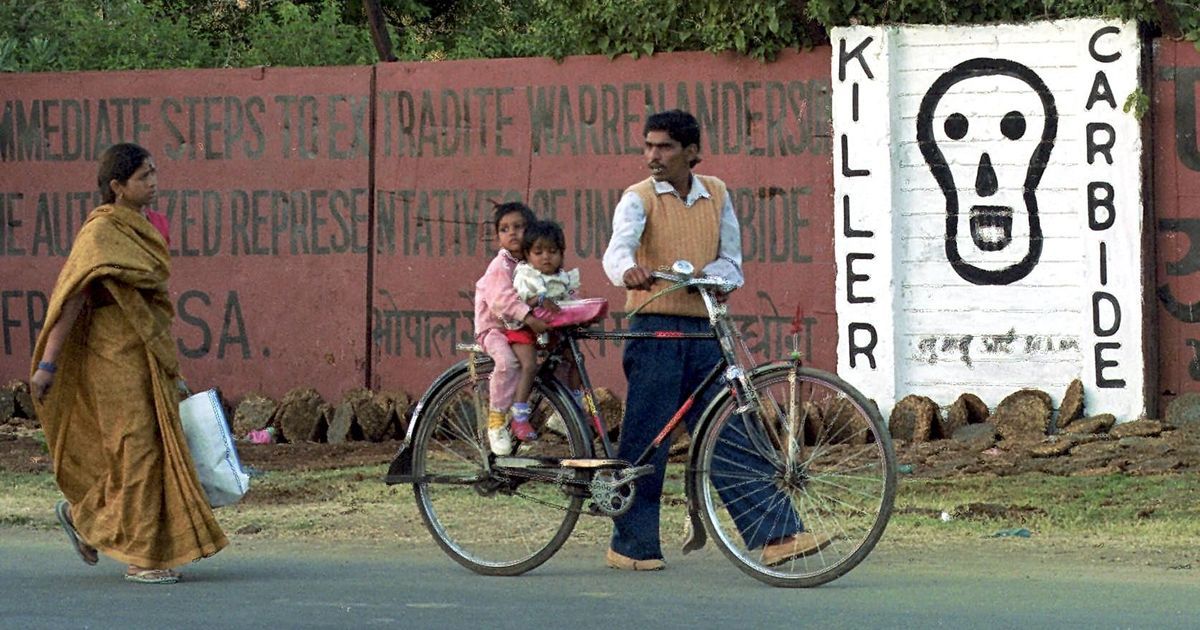Bhopal gas tragedy: SC tells Centre it is bound by law, cannot be ‘knight in shining armour’
A constitution bench told Attorney General R Venkataramani that the court could not hear the government’s curative petition like a suit.

A Supreme Court bench hearing a case about the Bhopal gas tragedy told the Centre on Wednesday that it was bound by the law and cannot “act like a knight in shining armour”, The Hindu reported.
A constitution bench headed by Justice Sanjay Kishan Kaul was hearing a curative petition filed in 2010 by the United Progressive Alliance government, seeking additional compensation of Rs 7,844 crore from the successors of the United States-based Union Carbide Corporation for the victims of the industrial accident.
Justice Kaul on Wednesday told Attorney General R Venkataramani that the court could not hear the Centre’s curative petition like a suit.
A curative petition is a plea asking a court to re-examine its decision even after a review petition in the matter has been dismissed. It is the last avenue open for a litigant in the Supreme Court.
Litigants can file curative petitions only if they could prove that the principles of natural justice were violated, their stand was not heard by the court or if the judge failed to disclose facts that could raise the possibility of bias, according to a Supreme Court decision in 2002. The judgement was given in the Ashok Hurra versus Rupa Hurra case that provided the basis for curative jurisdiction.
A suit, on the other hand, is a civil dispute in which a litigant can seek to hold another person liable for wrongful harm.
“The court cannot act like a knight in shining armour granting panacea for all,” Kaul said on Wednesday. “We are bound by the constraints of law. Of course, we have some leeway, but you [government] cannot say we should try your curative petition like an original suit.”
Justice Kaul said that the court does not have the privilege to “play to the gallery”, Bar and Bench reported.
Justice AS Oka said that if the government felt that the victims of the gas tragedy were entitled to more compensation, it should pay the amount. “But what do we do in a curative petition… Look at the Hurra jurisdiction,” he said.
The court also said that re-examining a settlement reached in 1989 would lead to questions about the sanctity of agreements made with the government.
“You [Centre] cannot now fasten additional liability after a settlement was willingly arrived at by parties,” the bench said. “Both sides took a decision. We cannot foreclose that.”
The Centre, in its petition, sought the re-examination of a judgement of the Supreme Court from 1989 that had allowed Union Carbide to settle the dispute with the Centre in connection with the industrial accident.
The company agreed to pay compensation of $470 million (Rs 750 crore) to the Centre.
In the curative petition, the Union government contended that the figure was based on incorrect assumptions of the number of deaths, injuries as well as losses, and did not take into account the subsequent environmental degradation.
The settlement was based on the earlier figure of 3,000 deaths and 70,000 injuries. However, the curative petition has put the death numbers at 5,295 and injuries at 5,27,894.
Also read:
Modi has made Bhopal gas tragedy a poll issue but survivors say BJP failed to bring them justice
Bhopal gas tragedy
In December 1984, methyl isocyanate and other toxic gases leaked from the pesticide plant of Union Carbide India Limited, then located on the outskirts of Madhya Pradesh capital of Bhopal.
More than five lakh people were exposed to the toxic gases and at least 4,000 were killed in the following days. Thousands more died due to the effects of the gas leak in subsequent years. Government figures estimate that there have been 15,000 deaths as a result of the disaster over the years.
Survivors of the tragedy have increased rates of cancer and birth defects, and suffer from a compromised immune system. In April 2019, the International Labour Organization listed the Bhopal gas tragedy among the world’s major industrial accidents in the last century.









